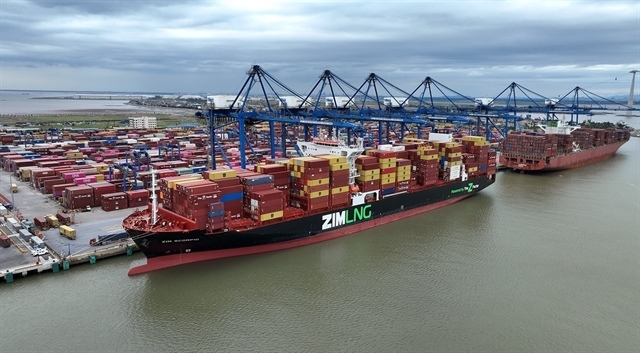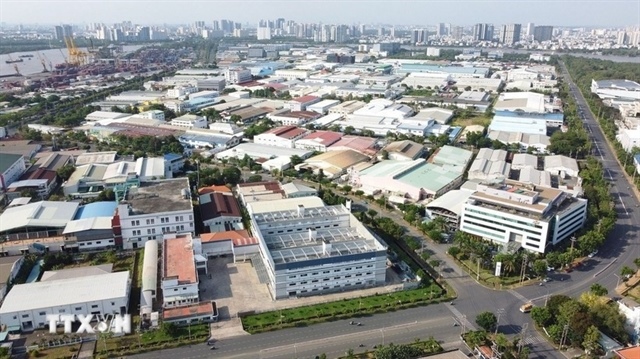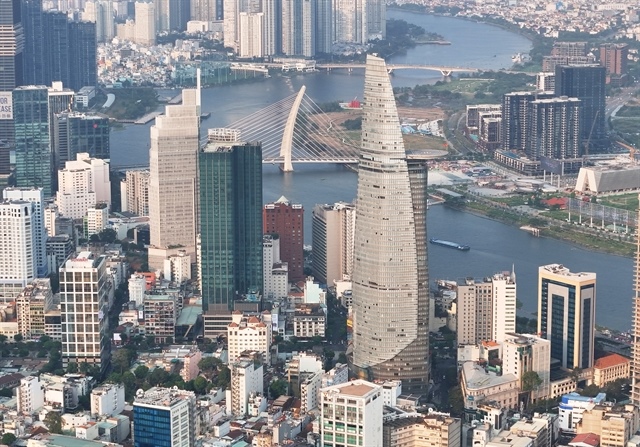Low productivity hinders new economic growth model
Low productivity hinders new economic growth model
Low labor productivity is a bottleneck to Vietnam’s new economic growth model. To escape the middle-income trap and make a successful breakthrough in the 2021-2045 period, the country’s total-factor productivity (TFP) should grow by 2.67%, noted Vu Viet Ngoan, head of the Prime Minister’s Economic Advisory Group.

Ngoan as a veteran economist made the point during the workshop, “the Vietnam Economic Growth Model in the 2021-2030 period, with a vision to 2045,” which was jointly held in Hanoi on Wednesday by the Vietnam Academy of Social Sciences (VASS), the PM’s Economic Advisory Group, the Ho Chi Minh National Academy of Politics, the World Bank and the Australian Embassy in Vietnam.
Vietnam has set its strategic objectives to become an upper middle-income country whose gross domestic product per capita is expected to reach US$4,859 by 2030 and US$12,642 by 2045, according to the economist.
Vietnam will have to maintain a growth rate in the range of 7% to 7.5% for the 2021-2030 period, higher than the average rate of 6.3% of the last 10 years. “This is an extremely important period that plays a decisive role in whether Vietnam can overcome the middle income trap,” Ngoan stressed.
He said a breakthrough in labor productivity will serve as a driving force behind Vietnam’s economic growth in the years to come. Given the switch to the digital economy, Vietnam will not be able to rely on the labor-intensive growth model.
The next period will see a gradual shift from labor intensity to capital and knowledge intensity and a move from quantitative to qualitative growth, he said, adding that the Government should set up a system to promote technological and innovative capacity, and entrepreneurship.
VASS statistics revealed that the country’s labor productivity has witnessed an improvement but is still much lower than in other regional countries. The figure for 2016 was US$9,894, which was equal to 7%, 17.6%, 36.5%, 42.3% and 56.7% of figures for Singapore, Malaysia, Thailand, Indonesia and the Philippines, respectively.
He referred to the TFP as a factor that spells the difference between successful and unsuccessful countries. Economies with a middle-income trap reach an average TFP rate of 0.4%, while those that have escaped the trap have a TFP of up to 1.2%.
He pointed out that the key driver of the disruptive growth in the next decade is the TFP growth. A modern technology strategy and an integrated policy system are the preconditions of the innovative model.
Nguyen Quang Thuan, VASS president, also pointed to positive economic changes made over the past three years, with a rapid increase in the number of equitized State-owned enterprises (SOEs) and more firms divesting capital from unnecessary sectors.
He stressed that progress had been made in the restructuring of SOEs, the banking sector and public investment.
Bui Thang Tuan, head of the Vietnam Institute of Economics, said that Vietnam’s economy was growing at a high rate of 6.3%, but the country had failed to reach the annual target of 7%-8%, set under the 2011-2020 strategy.
He suggested shifting the growth model toward quality; changing the ratio of resources contributing to growth; prioritizing science, technology and innovation; and utilizing opportunities offered by the Fourth Industrial Revolution and the nation’s golden population structure to ensure rapid high-quality growth.
“Since Doi Moi (economic reforms) took place in the late 1980s, Vietnam’s economic growth has been remarkable; the economy has expanded at an average of nearly 7% annually,” said Ousmane Dione, country director of the World Bank in Vietnam.
As a result, per capita income has increased almost fivefold. Vietnam today has emerged as a thriving lower middle-income economy and export powerhouse. Growth has also been inclusive, with poverty falling just below 7%, compared with more than 60% in the late 1980s.
However, Dione noted that Vietnam is domestically facing rising structural headwinds, including a rapidly aging population, the declining impact of factor accumulation and an increasing environmental toll on development.
Globally, Vietnam will have to navigate a changing terrain, where shifting global trade and investment patterns seem to be less favorable for export-led growth and the Fourth Industrial Revolution is reshaping opportunities and creating new risks, he added.
He suggested, “To mitigate these risks and seize the opportunities, Vietnam needs to accelerate reforms that boost productivity and innovation as key drivers of growth in the coming decade, including steps to remove bottlenecks for private sector investment, enhance public sector institutions and invest in 21st century skills for the workforce.”





















